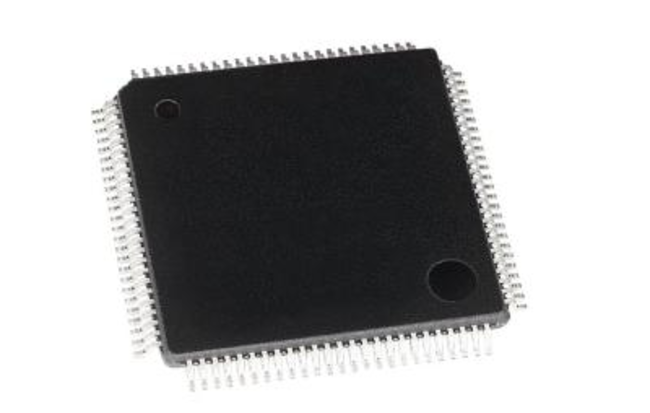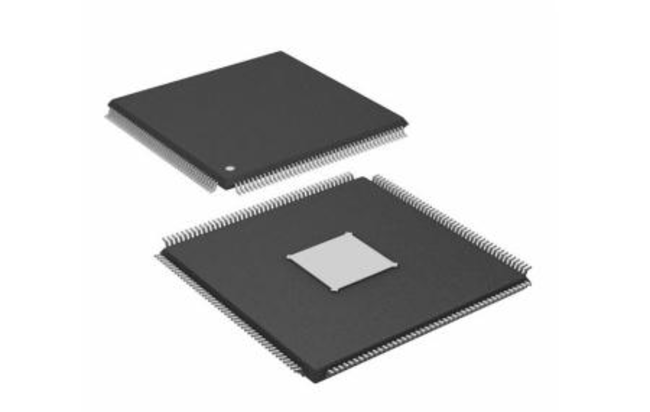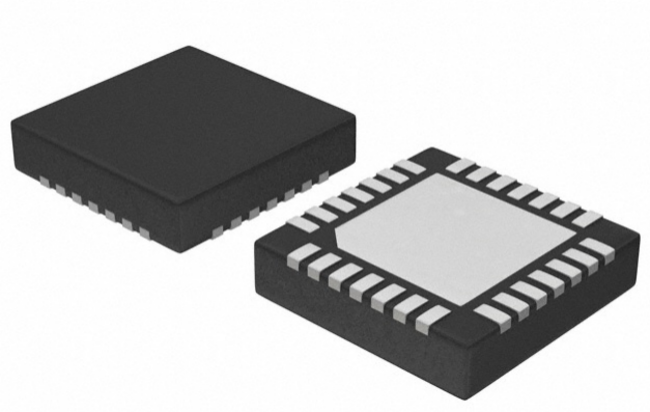
https://www.times-standard.com/2025/11/10/you-and-the-law-how-to-navigate-the-legal-boundaries-of-tenant-rights-during-a-family-crisis/
#times-standard
https://www.times-standard.com/2025/11/10/you-and-the-law-ho...

https://www.times-standard.com/2025/11/03/you-and-the-law-this-is-why-judge-judy-says-details-are-important-in-contracts-this-contract-had-holes/
#times-standard
https://www.times-standa...

https://www.essentiallysports.com/nba-active-basketball-news-joel-embiid-demands-punishment-for-refs-after-nba-s-five-figure-fine-for-lewd-gesture/


https://www.essentiallysports.com/ncaa-college-football-news-pro-bowler-lost-for-words-as-ohio-states-stocks-reach-all-time-high-brian-hartline-flexes/

https://www.essentiallysports.com/nascar-news-team-boss-calls-for-new-standards-on-waiver-as-nascar-penalty-costs-richard-childress-big/

When it comes to reliable and efficient microcontrollers for automotive and industrial applications, the Infineon Technologies XC164CS32F40FBBAKXQMA1 stands out as a powerful choice. In this comprehensive article, we'll delve into the intricacies of the XC164CS32F40FBBAKXQMA1, uncovering its definition, key features, specifications, applications, and a closer look at its manufacturer.
XC164CS32F40FBBAKXQMA1's Overview
The XC164CS32F40FBBAKXQMA1 is a 16-bit microcontroller unit (MCU) developed by Infineon Technologies, part of the XC166 family. It uses the C166SV2 core architecture that combines CISC, DSP, and RISC instruction sets. This MCU is designed for demanding environments requiring precise control and communication capabilities, especially in automotive sectors.
Key Features
Let's delve into the standout features that make the XC164CS32F40FBBAKXQMA1 a standout in the world of electronics:
· The MCU operates at a maximum CPU frequency of 40 MHz.
· It has a 16-bit data bus width, providing efficient data handling.
· The on-chip program memory is 256KB Flash, ensuring ample space for code storage.
· It includes 12KB of RAM to support runtime operations.
· The device supports expanded memory up to 16MB, enabling extended application scope.
· Programmability is fully supported for flexible application development.
· Communication interfaces include two CAN controllers, two SPI ports, and two USART channels.
· It features 79 general-purpose I/O pins for diverse connectivity.
· There are five timers and one PWM module for timing and control.
· The MCU offers one 10-bit ADC with 14 channels for precise analog measurements.
· It includes a built-in watchdog timer and a real-time clock for system reliability.
· Operating voltage ranges from 2.35V to 5.5V, suitable for automotive power systems.
· The device withstands operating temperatures from -40°C to 125°C, meeting automotive standards.
Get more details: XC164CS32F40FBBAKXQMA1: Features, Specs & More
When it comes to reliable and efficient microcontrollers for automotive and industrial applications, the Infineon Technologies XC164CS32F40FBBAKXQMA1 stands out as a powerful choice. In this comprehen...

If you're designing safetycritical automotive or industrial systems, the Infineon TC275TP64F200NDCLXUMA1 is a powerful 32bit AURIX MCU. It runs at up to 200 MHz, offers 4 MB flash and 472 KB RAM. In this comprehensive article, we'll delve into the intricacies of the TC275TP64F200NDCLXUMA1, uncovering its definition, key features, specifications, applications, and a closer look at its manufacturer.
TC275TP64F200NDCLXUMA1's Overview
The TC275TP64F200NDCLXUMA1 is a 32-bit TriCore RISC-based MCU designed by Infineon Technologies. It combines performance, safety, and efficiency in one powerful package. Developed under AEC-Q100 automotive standards, it ensures long-term reliability in harsh environments, making it ideal for use in automotive control units, industrial applications, and real-time embedded systems.
Key Features
Let's delve into the standout features that make the TC275TP64F200NDCLXUMA1 a standout in the world of electronics:
· This microcontroller operates on a 32-bit TriCore™ RISC architecture that provides high-speed processing and real-time capabilities.
· It integrates 4 megabytes of embedded Flash memory, which allows for extensive program storage and reliable execution.
· This chip is equipped with 472 kilobytes of RAM, supporting efficient data handling and buffering.
· It runs at a maximum CPU frequency of 200 MHz, ensuring fast and responsive system performance.
· The device supports a wide operating voltage range from 3.0V to 5.5V, making it flexible for various power supply configurations.
· It includes 112 general-purpose input/output pins, allowing seamless integration with peripheral components and sensors.
· This MCU features a high-resolution 12-bit ADC with 40 input channels for accurate analog signal processing.
· It is built with four CAN communication interfaces, enabling reliable in-vehicle networking and data exchange.
· A dedicated watchdog timer is included to provide system safety through fault detection and recovery mechanisms.
· The device is housed in a 176-pin LQFP EP package, which supports secure and space-efficient surface mounting.
· The operating temperature range extends from -40°C to 150°C, making it suitable for harsh and automotive-grade environments.
Get more details: TC275TP64F200NDCLXUMA1: Features, Specs & More
If you're designing safetycritical automotive or industrial systems, the Infineon TC275TP64F200NDCLXUMA1 is a powerful 32bit AURIX MCU. It runs at up to 200 MHz, offers 4 MB flash and 472 KB RAM. In t...

Do you know about the further process that takes place after the client receives the product or the service? It’s issuing the invoices. While issuing the invoices, clients will experience a sense of satisfaction because they will receive payments once they forward the invoices to the clients.
How can you get timely payments? The answer is simple — include the correct due date on your invoices. However, if the invoice due date is not specified, then how does the client know about the due date and make the payment?
So, mentioning the invoice due date in the invoice is crucial. There are some tips and tricks for setting this invoice due date and some best practices for setting it. This blog mentions all the details about the invoice due date. So, continue to read and gain valuable information from this for your business.
What Does an Invoice Due Date Mean?
The invoice due date is the date that is mentioned in the invoice to disclose to the clients about the date on which or before they must make the payment. When the clients don’t make the payment within the due date, then penalties can be charged against them.
An example of this situation is as follows. A client is purchasing a computer from you, and it is delivered to the client on May 1st. Once the client receives the product, you generate the invoice for the purchased item and mention the invoice amount as $470, apply the net 90 payment term, and enter the invoice due date as July 29th. This invoice indicates that your client must make the payment on July 29th. If payment is not made on the due date, then late penalties can be charged to the client.
While mentioning the invoice due date, some factors should be considered. The first factor to be considered is the size of the business. If the business is small scaled or medium, or a startup, then net 15 and 30 payment terms can be offered. For large enterprises, net 60 and 90 payment terms can be offered. The next factor to be considered is the payment history of the clients. By considering these factors, the invoice due date can be mentioned.
Significance of Invoice Due Date:
- Mentioning the correct date in the invoice helps in getting prompt payments. As payments are the bloodstream of the business, they should be obtained properly. So, mentioning the invoice due date on the invoice makes the clients get updated about the date they must make the payment.
- As the invoice due date assists in receiving quick payments, a smooth cash flow will be experienced by the business. This positive cash flow safeguards the business from a lack of funds. Also, it sets a clear view for the clients about making the payment.
Best Ways to Define Due Dates on Invoices:
Some of the best ways to mention due dates on the invoices are as follows.
1. Date Format: The invoice due date should follow a standard format of DD/MM/YYYY. This clear format gives the client a clear view of the due date.
2. Create Online Invoices: When you use online invoices generated through online invoicing software for small business, easy customization can be carried out and professionalism can be maintained. The manual invoicing process lacks these customization features.
3. Validate the Payment Terms: Reviewing the payment terms mentioned in the invoice results in avoiding payment and invoice disputes.
Overall, the invoice due date plays a major role in the payment collection and smooth business operations. So, mention it accurately in the invoice and get prompt payments.
Do you know about the further process that takes place after the client receives the product or the service? It’s issuing the invoices. While issuing the invoices, clients will experience a sense of s...

If you’re diving into embedded systems or industrial electronics, understanding the right microcontroller is crucial. The Microchip Technology PIC18F25K80-I/MM is a powerful 8-bit MCU designed to balance performance, low power consumption, and versatility. In this comprehensive article, we'll delve into the intricacies of the PIC18F25K80-I/MM, uncovering its definition, key features, specifications, applications, and a closer look at its manufacturer.
PIC18F25K80-I/MM's Overview
The PIC18F25K80-I/MM is an 8-bit microcontroller built on the RISC (Reduced Instruction Set Computing) architecture. Designed by Microchip Technology, it offers a robust set of features tailored for industrial-grade applications requiring reliability and efficient processing. With a 32KB Flash program memory and a maximum CPU frequency of 64 MHz, it strikes a perfect balance between power and efficiency.
Key Features
Let's delve into the standout features that make the PIC18F25K80-I/MM a standout in the world of electronics:
· It operates on a nanoWatt XLP process technology for ultra-low power consumption.
· It supports multiple operating voltages: 2.5V, 3.3V, and 5V.
· It includes 24 general-purpose I/O pins for flexible interfacing.
· It integrates a powerful CAN controller, ideal for automotive and industrial networking.
· It features 5 timers and 4 PWM channels for precise timing and control.
· It has a 12-bit ADC with 8 channels, providing high-resolution analog inputs.
· It offers 2 USART interfaces and supports SPI and I2C communication protocols.
· It has built-in watchdog timer and analog comparators for enhanced system safety.
· The device supports a maximum expanded memory size of 2MB.
· It operates reliably within a temperature range from -40°C to 85°C, meeting industrial standards.
· Packaged in a compact 28-pin QFN surface-mount format for efficient PCB design.
Get more details: PIC18F25K80-I/MM: Features, Specs & More
If you’re diving into embedded systems or industrial electronics, understanding the right microcontroller is crucial. The Microchip Technology PIC18F25K80-I/MM is a powerful 8-bit MCU designed to bala...

In the fast-evolving world of embedded systems and digital design, compact yet powerful FPGAs are essential for developers seeking high performance within tight design constraints. One such solution is the Lattice Semiconductor LCMXO256C-3TN100I—a small-footprint, low-power, high-reliability FPGA from the popular MachXO family. In this comprehensive article, we'll delve into the intricacies of the LCMXO256C-3TN100I, uncovering its definition, key features, specifications, applications, and a closer look at its manufacturer.
LCMXO256C-3TN100I's Overview
The LCMXO256C-3TN100I is a Field-Programmable Gate Array (FPGA) developed by Lattice Semiconductor, designed using a 130nm CMOS process. It belongs to the MachXO family, which is known for offering non-volatile, low-cost, and instant-on programmable logic devices. This model features 256 logic elements and supports various I/O standards with versatile voltage options. It's particularly tailored for industrial-grade applications, operating effectively in temperatures ranging from -40°C to 100°C.
Key Features
Let's delve into the standout features that make the LCMXO256C-3TN100I a standout in the world of electronics:
· Based on 130nm process technology for optimized performance and low power.
· Supports 1.8V, 2.5V, and 3.3V operating supply voltages.
· Includes 256 logic elements, suitable for small-to-medium logic designs.
· Offers 78 user-configurable I/O pins to interface with other hardware.
· Equipped with 2 I/O banks and a wide range of I/O voltage support (1.2V to 3.3V).
· Features in-system programmability (ISP) and reprogrammability for design flexibility.
· Integrates 8 global clocks for better timing and synchronization.
· Built with 2048 bits of distributed RAM for efficient data handling.
· Low maximum propagation delay time of 4.9ns.
· Comes in a 100-pin TQFP package with a compact 14x14mm footprint.
Get more details: LCMXO256C-3TN100I: Features, Specs & More
In the fast-evolving world of embedded systems and digital design, compact yet powerful FPGAs are essential for developers seeking high performance within tight design constraints. One such solution i...

https://www.times-standard.com/2025/05/07/soccer-players-celebrate-50ish-years-of-sport-in-humboldt-county/
#times-standard

https://www.times-standard.com/2025/03/10/trump-administrations-eo-may-result-in-roll-back-of-historic-preservation-efforts/
#times-standard
- HippoRAG: Neurobiologically Inspired Long-Term Memory for Large Language Models
original article — hacker news - Did UCLA Just Cure Baldness?
original article — hacker news - Transformer – Spreadsheet
original article — hacker news - Easy 6502
original article — hacker news - There May Not Be Aha Moment in R1-Zero-Like Training
original article — hacker news - Understanding Reasoning LLMs
original article — hacker news - It is time to standardize principles and practices for software memory safety
original article — hacker news - Robust autonomy emerges from self-play
original article — hacker news - Maria Montessori
original article — hacker news - Show HN: SQLite disk page explorer
original article — hacker news
- HippoRAG: Neurobiologically Inspired Long-Term Memory for Large Language Models
original article — hacker news - Did UCLA Just Cure Baldness?
original article — hacker news - Transformer – Spreadsheet
ori...

https://www.times-standard.com/2025/01/12/los-angeles-wildfires-death-toll/
#times-standard

https://www.times-standard.com/2025/01/10/photos-an-afternoon-at-the-zoo/
#times-standard

https://www.times-standard.com/2025/01/04/how-to-watch-the-2025-golden-globes-red-carpet-streaming-nominees-and-more/
#times-standard
https://www.times-standard.com/2025/01/04/how-to-watch-the-2025-golden-globes-red-...

https://www.times-standard.com/2025/01/03/photos-library-gala-recognizes-local-book-loving-residents/
#times-standard

https://www.times-standard.com/2024/12/06/eel-river-valley-businesses-clean-up-after-7-0-quake/
#times-standard
https://www.times-standard.com/202...

https://www.times-standard.com/2024/12/01/spellbound-review-netflix-animated-offering-colorful-but-not-all-youd-hope/
#times-standard
https://ww...

https://vancouversun.com/news/metro-vancouver-eyes-standardized-six-storey-wood-apartments
#vancouversun
https://vancouversun.com/news/metro-vancouver-eyes-standardized-six-storey-wood-apartments
#van...

https://www.times-standard.com/2024/11/10/eureka-womans-club-program-looks-at-1964-flood/
#times-standard
https://www.times-standard.com/2024/11/10/eureka-womans-...

https://www.times-standard.com/2024/11/08/photos-sequoia-park-celebrates-humboldt-countys-natural-environment/
#times-standard
https://www.times-standard.com/2024/11/08/...


https://www.times-standard.com/2024/10/28/esther-the-zester-wine-and-candy-is-a-pairing-made-for-halloween/
#times-standard
https://www.times-standard.com/2024/10/28/esther-the-zester-wine-and-candy-is-a-pairi...

https://kotaku.com/throne-and-liberty-mmo-ncsoft-everything-to-know-1851665223
#kotaku

https://www.times-standard.com/2024/08/30/photo-tourism-goal-unlocked-eureka-visitor-center-earns-state-designation/
#times-standard

https://www.denverpost.com/2024/07/16/derrick-white-chauncey-billups-team-usa-cu-buffs-boston-celtics-paris-olympics/
#photos
https://www.denverpo...

https://www.times-standard.com/2024/06/29/civic-calendar-humboldt-county-supervisors-to-consider-another-exemption-to-hiring-freeze-for-sheriffs-office/
#times-standard
https://www.times-standard.com/2024/06/29/civic-calendar-humboldt-county-supervisors-to-consider-another-exemption-to-h...

https://www.essentiallysports.com/golf-news-fed-up-with-hypocrisy-over-sexy-content-paige-spiranac-slams-conservative-golf-industry-for-awful-experiences/